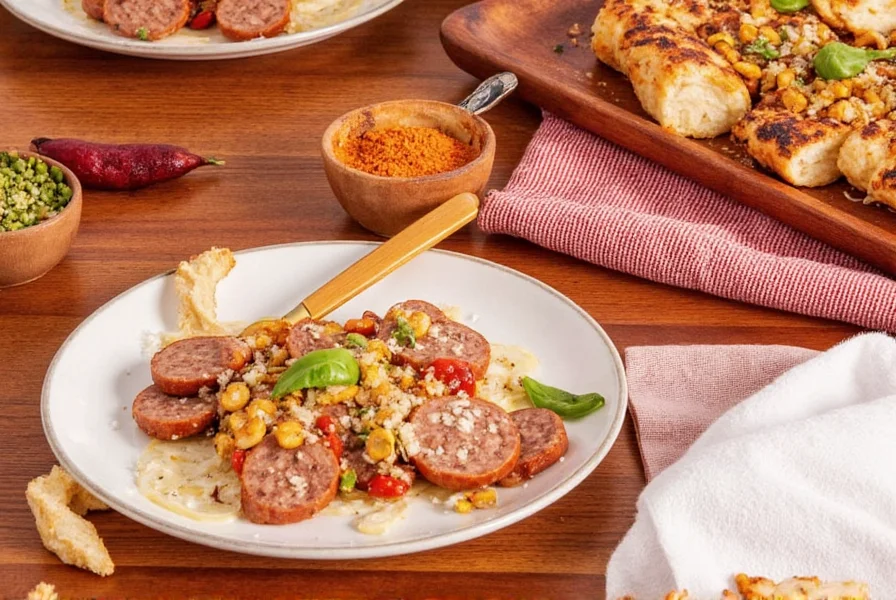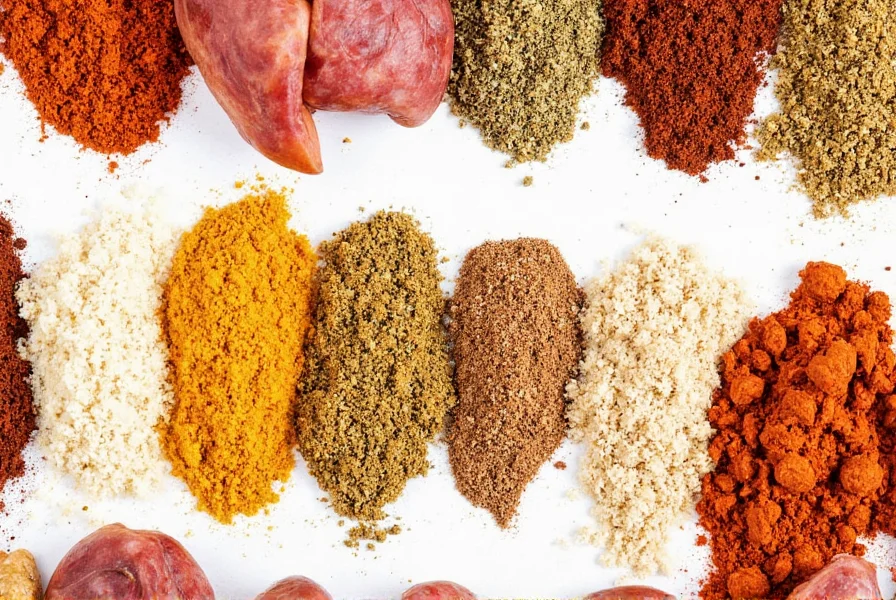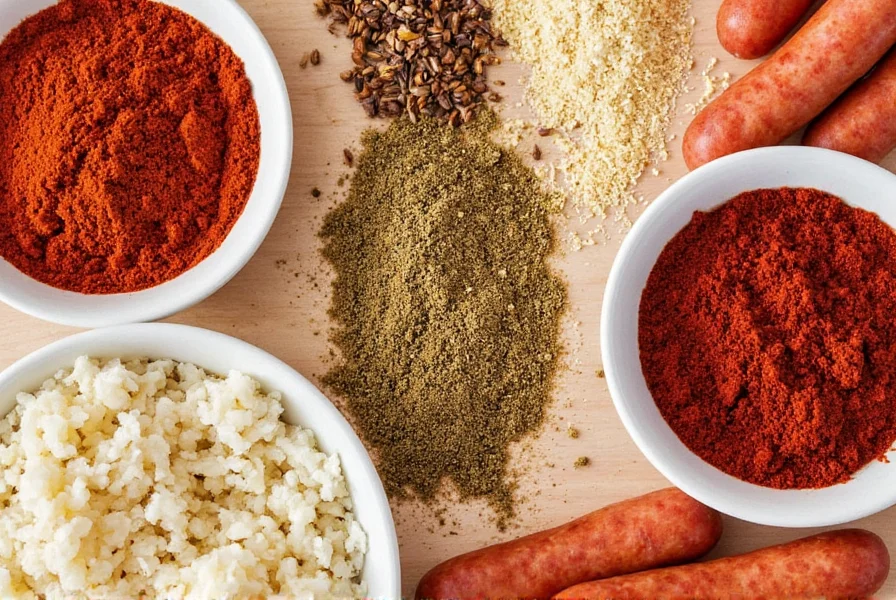Sausage Spices That’ll Make You Shout ‘Mamma Mia!’: The Ultimate Italian Sausage Spice Recipe Guide
Table of Contents
- Why Italian Sausage Spice Recipes Matter
- The Core Spices in an Authentic Italian Sausage Recipe
- Sweet vs. Spicy: Exploring Regional Italian Sausage Flavors
- How to Make Your Own Italian Sausage Spice Blend at Home
- Buying Guide: Choosing the Best Ready-Made Italian Sausage Seasonings
- Pro Tips for Cooking with Italian Sausage Spice Blends
- Conclusion: Mastering the Art of Italian Sausage Flavor
Why Italian Sausage Spice Recipes Matter
If there’s one thing that makes your kitchen feel like a cozy Italian trattoria, it’s the rich aroma of freshly made sausages sizzling on the grill. And behind every mouthwatering bite lies the secret: the perfect blend of spices.
Whether you’re making homemade sausage or using store-bought blends, the spices are the stars of the show. From fennel to paprika and garlic to chili flakes, each component plays a role in crafting that unmistakable flavor profile we all crave.
The Core Spices in an Authentic Italian Sausage Recipe
Let’s break down the essential spices that define the heart of any traditional Italian sausage:
- Fennel Seed: The signature licorice-like note that screams Italian sausage.
- Garlic Powder or Fresh Garlic: For that unmistakable savory depth.
- Paprika: Adds color and subtle smokiness (especially sweet Hungarian paprika).
- Red Pepper Flakes: Brings the heat — optional but classic in spicy versions.
- Black Pepper: A must-have for warmth and earthiness.
- Dried Oregano: Lends a rustic Mediterranean touch.
- Salt: Enhances flavor and helps preserve the meat.
Spice Ratios for Classic Italian Sausage (Per Pound of Meat)
| Spice | Quantity | Flavor Contribution |
|---|---|---|
| Fennel Seeds | 1 tbsp (crushed) | Anise-like sweetness, iconic flavor |
| Garlic Powder | 1 tsp | Earthy, aromatic backbone |
| Paprika | 1 tsp | Color boost + mild smoky depth |
| Crushed Red Pepper Flakes | ½ tsp | Kicks up the heat (adjust to taste) |
| Black Pepper | 1 tsp | Warm, sharp bite |
| Oregano | ½ tsp | Rustic herbal note |
| Salt | 1 tsp | Brining & flavor enhancer |
Sweet vs. Spicy: Exploring Regional Italian Sausage Flavors
Italy isn’t just one big kitchen — it’s a collection of regional kitchens, each with its own take on sausage spice profiles.

Sweet Italian Sausage
- No red pepper flakes
- Higher fennel content
- Often includes a dash of nutmeg or marjoram for extra sweetness
Spicy Italian Sausage
- Includes red pepper flakes
- May have crushed fennel pollen for more intense aroma
- Smoked paprika instead of regular for deeper flavor
Regional Variations
| Region | Signature Spice | Description |
|---|---|---|
| Tuscany | Wild Fennel Pollen | Fragrant, slightly floral twist |
| Sicily | Chili & Cumin | More North African influence |
| Lombardy | Nutmeg | Creamy richness, often in braised dishes |
How to Make Your Own Italian Sausage Spice Blend at Home
Want to level up your cooking game? Making your own spice blend not only tastes better, but it also lets you customize the flavor exactly how you like it.

DIY Italian Sausage Seasoning Recipe
- 3 tbsp fennel seeds
- 1 tbsp garlic powder
- 2 tsp paprika
- 1 tsp crushed red pepper flakes (optional)
- 2 tsp black pepper
- 1 tsp dried oregano
- 2 tsp salt
Instructions
- Toast fennel seeds in a dry skillet for 1–2 minutes until fragrant.
- Grind them coarsely using a mortar and pestle or spice grinder.
- Mix all ingredients together in a bowl.
- Store in an airtight container away from light and moisture.
Buying Guide: Choosing the Best Ready-Made Italian Sausage Seasonings
If you're short on time or prefer convenience, here's a quick breakdown of popular ready-made Italian sausage seasonings available in stores or online:
| Brand | Key Features | Best For | Pros | Cons |
|---|---|---|---|---|
| McIlhenny Italian Sausage Seasoning | Bold fennel base, medium heat | Traditionalists who want authentic flavor fast | Easy to use, consistent results | A bit pricey for large batches |
| Badia Italian Sausage Blend | Herb-forward, slightly sweeter | Beginners looking for balanced flavor | Affordable, widely available | Less punch compared to custom blends |
| Penzeys Italian Sausage Mix | Adjustable heat level, no added fillers | Cooks who like to tweak recipes | Customizable, clean ingredient list | Harder to find in local stores |
Pro Tips for Cooking with Italian Sausage Spice Blends
Once you’ve got your spices right, here’s how to make the most of them:

- Marinate overnight: Let the meat rest with the spices for at least 8 hours for maximum flavor absorption.
- Don’t over-mix: When making fresh sausage, overworking the meat can lead to tough texture.
- Use pork shoulder: It has the right fat-to-meat ratio for juicy sausages.
- Try different casings: Natural hog casings give that classic snap, while collagen casings are easier for beginners.
- Add wine or vinegar: Just a splash during cooking adds complexity and balances the richness.
Conclusion: Mastering the Art of Italian Sausage Flavor
The magic of Italian sausage is more than just meat — it’s about tradition, technique, and, above all, the spices that tie everything together. Whether you’re grinding your own blend or choosing a trusted brand, understanding the role of each spice will help you create unforgettable meals.
So next time you fire up the grill or fry pan, don’t just throw in “some spices.” Be intentional, be bold, and let your senses guide you toward the perfect Italian sausage experience. Buon appetito!










 浙公网安备
33010002000092号
浙公网安备
33010002000092号 浙B2-20120091-4
浙B2-20120091-4